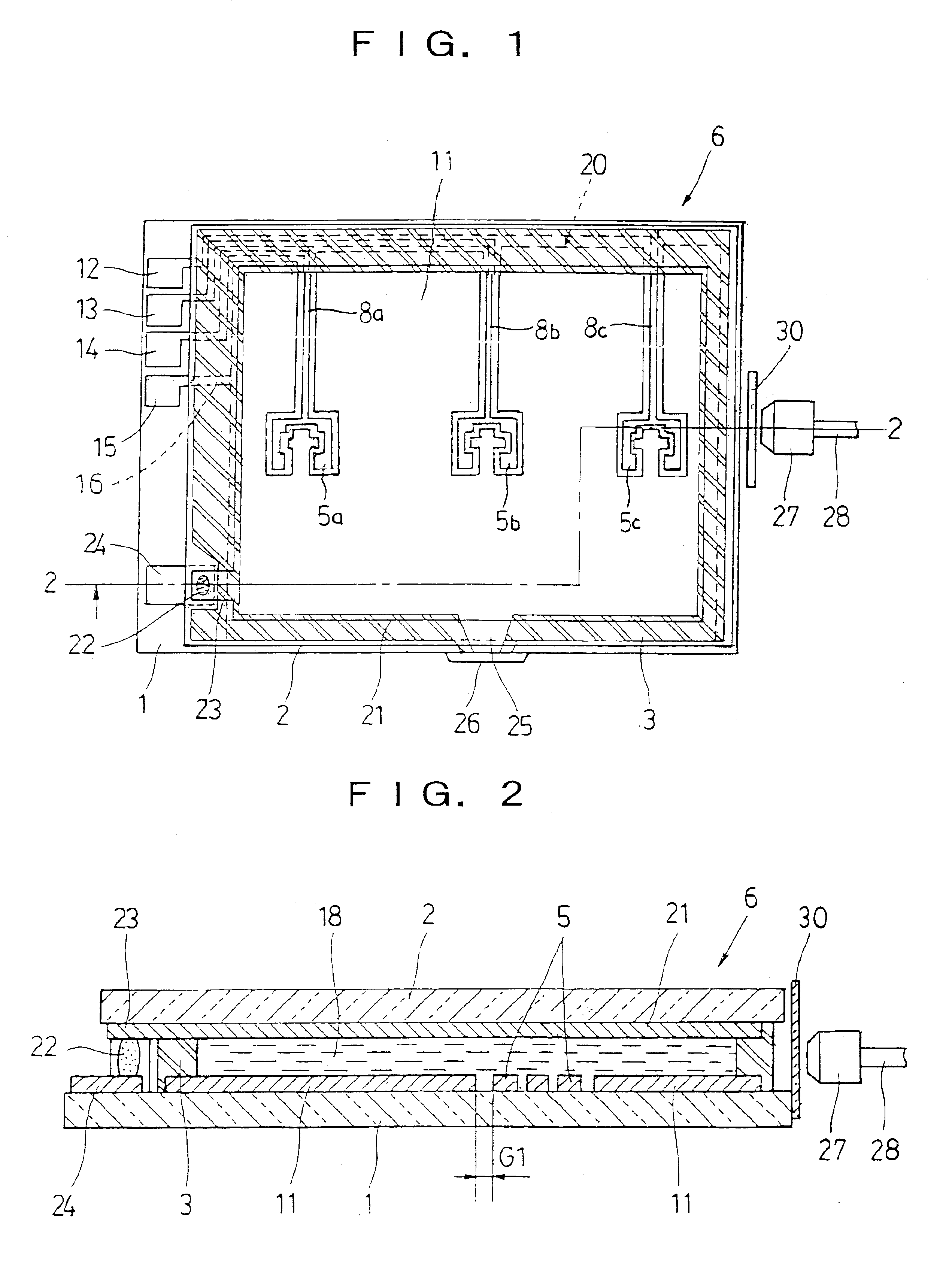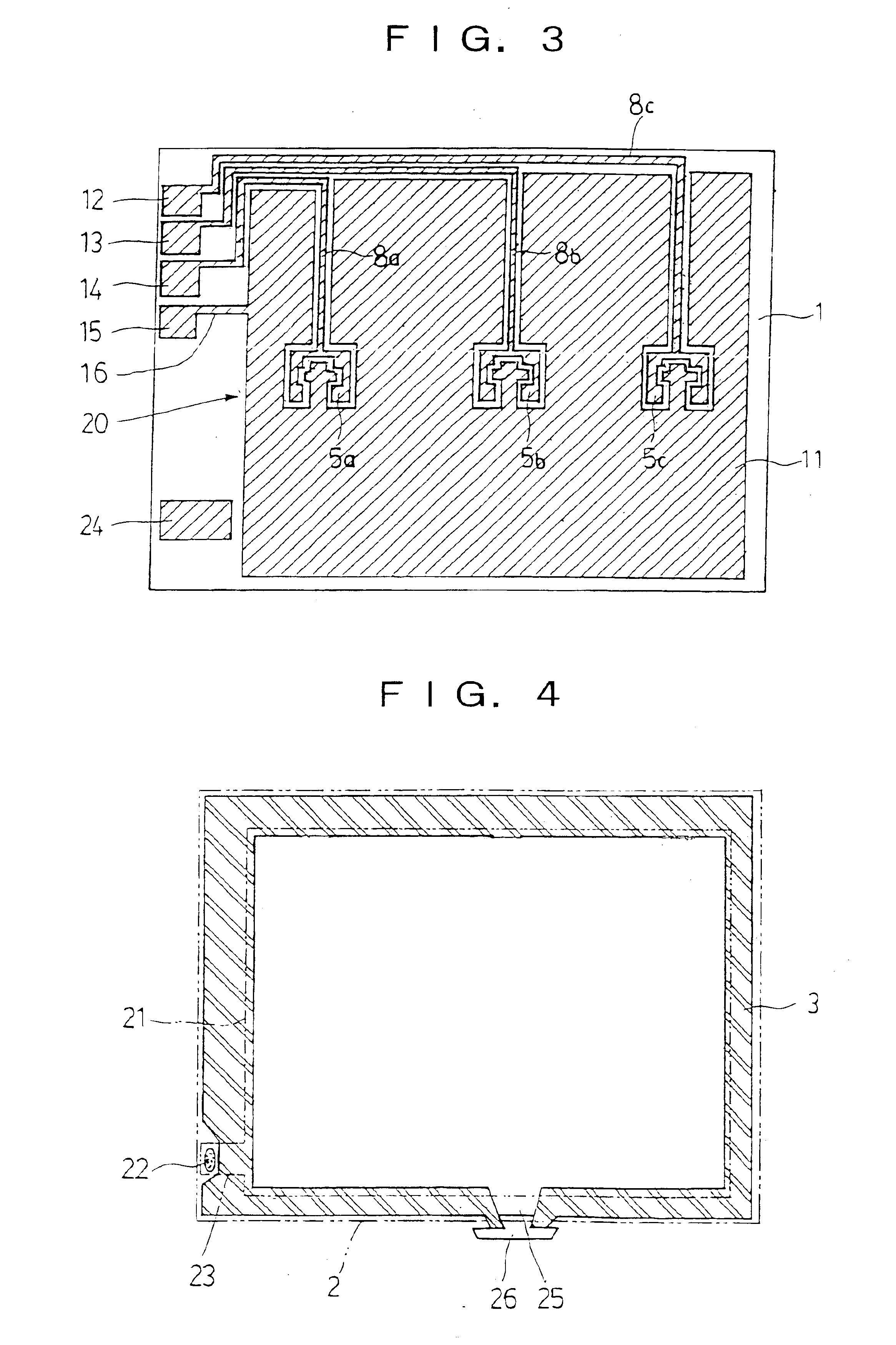Camera having a liquid crystal display device
a liquid crystal display and camera technology, applied in the field of cameras having liquid crystal display devices, can solve the problems of reducing the transmittance of light, dark transmission display, and the inability to view the display of target patterns or the like on the liquid crystal display panel, so as to improve the efficiency of emitting light and reduce the intensity of ligh
- Summary
- Abstract
- Description
- Claims
- Application Information
AI Technical Summary
Benefits of technology
Problems solved by technology
Method used
Image
Examples
first embodiment
First, the first embodiment of a liquid crystal display device according to the invention is explained with reference to FIG. 1 to FIG. 9.
FIG. 1 is a plane view of a liquid crystal display panel and a light source part of the liquid crystal display device, FIG. 2 is a schematic cross-sectional view taken along a line 2—2 in FIG. 1, FIG. 3 is a plane view of a first substrate formed with a signal electrode on the upper surface thereof, FIG. 4 is a plane view of a sealing part provided between the first substrate and a second substrate, and FIG. 5 is a plane view of the second substrate formed with a counter electrode on the lower surface thereof.
With these drawings, the structure of the liquid crystal display panel of this embodiment is explained first.
In a liquid crystal display panel 6, as shown in FIG. 1 and FIG. 2, a first substrate 1 formed with a signal electrode 20 and a second substrate 2 formed with a counter electrode 21 on one surface, respectively, are coupled together, w...
PUM
| Property | Measurement | Unit |
|---|---|---|
| Width | aaaaa | aaaaa |
| Transmission | aaaaa | aaaaa |
| Strength | aaaaa | aaaaa |
Abstract
Description
Claims
Application Information
 Login to View More
Login to View More - R&D
- Intellectual Property
- Life Sciences
- Materials
- Tech Scout
- Unparalleled Data Quality
- Higher Quality Content
- 60% Fewer Hallucinations
Browse by: Latest US Patents, China's latest patents, Technical Efficacy Thesaurus, Application Domain, Technology Topic, Popular Technical Reports.
© 2025 PatSnap. All rights reserved.Legal|Privacy policy|Modern Slavery Act Transparency Statement|Sitemap|About US| Contact US: help@patsnap.com



